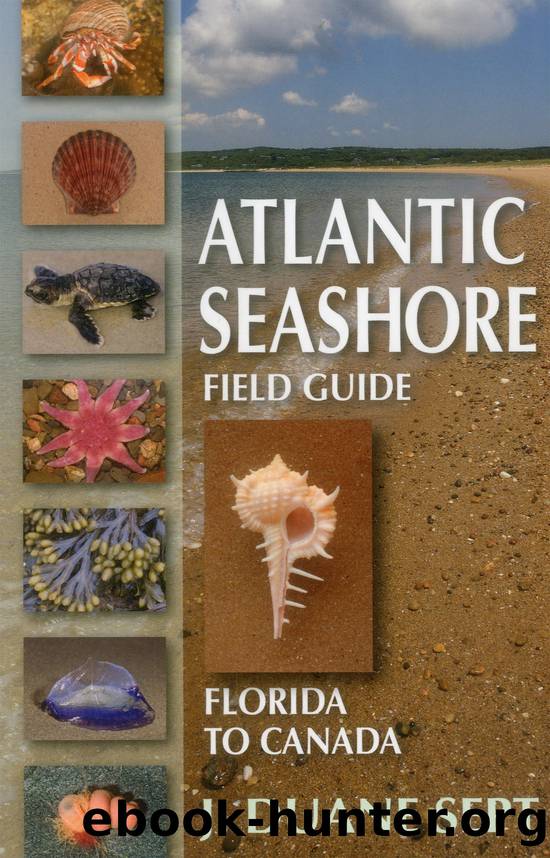Atlantic Seashore Field Guide by Sept J. Duane;

Author:Sept, J. Duane;
Language: eng
Format: epub
ISBN: 9780811763486
Publisher: Stackpole Books
Published: 2017-01-10T00:00:00+00:00
Atlantic Sea Scallop
Placopecten magellanicus
Authority: (Gmelin, 1791)
Other Names: Also known as Atlantic deep-sea scallop, deep-sea scallop, giant scallop, sea scallop; formerly classified as Pecten tenuicostatus
Description: The exterior of the lower (right) shell is reddish or pinkish brown, occasionally with white rays. The exterior of the upper (left) shell is pinkish white. The shellsâ interiors are white. The valves are moderately thick and solid, nearly circular, with small, almost equal ears. The shells are sculptured with numerous fine radial threads.
Size: Length to 8" (20 cm); width to 8" (20 cm)
Habitat/Ecology: On sand, gravel, or rubble; in subtidal waters from 12â600' (4â180 m) deep
Geographic Range: Labrador to Cape Hatteras
Notes: Unlike the blue eyes of the Atlantic calico scallop, this scallop has steely gray eyes. The shells of the Atlantic sea scallop were often used as dishes by the native people along the coast. The age of this scallop can be estimated by counting the number of rings on its shellâjust as the rings of a tree. The Atlantic sea scallop matures at four years and lives six to eight years on average. This species can be observed at snorkeling depths in Maine. This species is the focus of an important commercial fishery. Their shells are sometimes found on the beach after a storm.
Download
This site does not store any files on its server. We only index and link to content provided by other sites. Please contact the content providers to delete copyright contents if any and email us, we'll remove relevant links or contents immediately.
The Lonely City by Olivia Laing(4131)
Animal Frequency by Melissa Alvarez(3763)
All Creatures Great and Small by James Herriot(3528)
Walking by Henry David Thoreau(3238)
Exit West by Mohsin Hamid(3198)
Origin Story: A Big History of Everything by David Christian(3146)
COSMOS by Carl Sagan(2962)
How to Read Water: Clues and Patterns from Puddles to the Sea (Natural Navigation) by Tristan Gooley(2880)
Hedgerow by John Wright(2782)
The Inner Life of Animals by Peter Wohlleben(2777)
Origin Story by David Christian(2694)
How to Read Nature by Tristan Gooley(2670)
Project Animal Farm: An Accidental Journey into the Secret World of Farming and the Truth About Our Food by Sonia Faruqi(2668)
How to Do Nothing by Jenny Odell(2652)
Water by Ian Miller(2598)
A Forest Journey by John Perlin(2590)
The Plant Messiah by Carlos Magdalena(2459)
A Wilder Time by William E. Glassley(2367)
Forests: A Very Short Introduction by Jaboury Ghazoul(2338)
